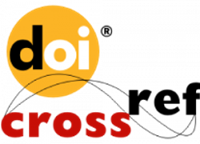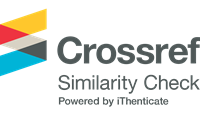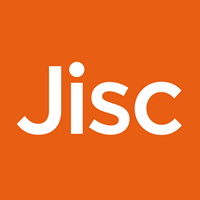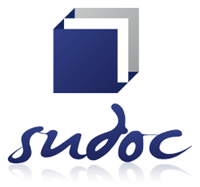Mlearning in a mobile world: an analysis of the scientific production of mlearning in the context of language education
Abstract
Mobile learning (mlearning) has been emerging as an innovation with incredible potential to transform the educational practice. However, limited research has focused on how mlearning has been investigated in the context of language teaching and learning around the world. This paper presents a survey on the educational scenario that pervades the teaching and learning English as a second or foreign language mediated by technology. This study conducted an analysis of publications (N=18) involving mlearning in the context of teaching or learning English as a foreign or second language and published from 2010 to March 2019. The aims were to verify in what perspective mlearning has been investigated in the context of teaching and/or learning a foreign or second language, what critical success factors (CSFs) have influenced the implementation of mlearning and identify possible gaps of study that need to be fulfilled in future researches. The results indicate that: i) mlearning has been most investigated in the tertiary educational level, ii) the learners` perspective has been the focus of most publications, iii) English is the target language in all studies, and iv) the dominant topic concerning this theme is mlearning technologies, apps and uses. In addition, the findings also report that 19 CSFs were pointed out in 14 publications and assimilation of curriculum (50%) was the most cited CSF. Moreover, the results indicate that there has been a recent increase of interest in mlearning related to foreign language teaching and learning. Further topics of investigation concerning mlearning in language education are suggested.
Downloads
References
Abdullah, M. R. T. L., Hussin, Z., Asra, & Zakaria, A. R. (2013). Mlearning scaffolding model for undergraduate English language learning: bridging formal and informal learning. The Turkish Online Journal of Educational Technology, 12(2), 217-233.
Ahmad, A., & Farrukh, F. (2015). Significance of social applications of a mobile phone for English task-based language learning. Teaching English with Technology, 15(2), 94-105.
Alkhezzi, F., & Al-Dousari, W. (2016). The impact of mobile learning on ESP learners’ performance. The Journal of Educators Online, 13(2), 73-101.
Alrasheedi, M., & Capretz, L. F. (2015). Determination of critical success factors affecting mobile learning: a meta-analysis approach. Turkish Online Journal of Educational Technology, 14(2) 41-51.
Ardi, P. (2017). Promoting learner autonomy through schoology m-learning platform in an EAP class at an Indonesian university. Teaching English with Technology, 17(2), 55-76.
Bandura, A. (2008). Toward an agentic theory of the self. In H. W. Marsh, R. G. Craven, & D. M. McInerney (Eds.), Self-processes, learning, and enabling human potential: dynamic new approaches (p. 15-49). Charlotte, NC: Information Age Publishing.
Brown, C. L. (2005). Can you hear me now? Christian Education Journal, 2(1), 190-193.
Byrne, J. (2016). Same time same place: do MALL classrooms exist? Teaching English with Technology, 16(3), 74-84.
Cheung, S. K. S. (2012). A study on the use of mobile devices for distance learning. In S. K. S. Cheung, J. Fong, L. F. Kwok, K. Li, & R. Kwan (Eds.), Hybrid learning (p. 89-98). Berlin, DE: Springer/Heidelberg.
Cig, E. K., Guvercin, S., Bayimbetov, B., & Dos, B. (2015). Teaching English phrases through SMS. European Journal of Educational Research, 4(1), 48-56.
Costa, G. S. (2013). Mobile learning: explorando potencialidades com o uso do celular no ensino – aprendizagem de língua inglesa como língua estrangeira com alunos da escola pública (Tese de Doutorado). Universidade Federal de Pernambuco, Recife.
El-Hussein, M. O. M., & Cronje, J. C. (2010). Defining mobile learning in the higher education landscape. Educational Technology & Society, 13(3), 12-21.
Faccioni Filho, M. (2008). M-learning: mobile devices and trends in education. In ICBL 2008 International Conference on Interactive Computer aided Learning. Florianólopis, SC.
Figaro-Henry, S., & James, F. (2015). Mobile learning in the 21st century higher education classroom: readiness experiences and challenges. Caribbean Curriculum, 23, 99-120.
Fluminhan, C. S. L. (2017). Em busca de caminhos que promovam a autorregulação: uma experiência com uma professora e seus alunos do ensino fundamental (Dissertação de Mestrado). Universidade do Oeste Paulista, Presidente Prudente, SP.
Fluminhan, C. S. L., & Murgo, C. S. (2017). Analysis of the scientific production on feedback on teaching English as a foreign language using ERIC database. Acta Scientiarum. Education, 39(suppl.), 533-543. doi: 10.4025/actascieduc.v39i0.30889
Fluminhan, C. S. L., Murgo, C. S., & Fluminhan, A. (2015). A importância do feedback e das crenças de autoeficácia do aluno na aquisição de língua estrangeira. Colloquium Humanarum, 12(4), 69-80. doi: 10.5747/ch.2015.v12.n4
Fluminhan, C. S. L., Murgo, C. S., & Fluminhan, A. (2018). O feedback como ferramenta avaliativa e motivadora no processo de aquisição de língua estrangeira. Cadernos de Linguagem e Sociedade, 19(2),
-58. doi: 10.26512/les.v19i2.16810
García, S., & Fombona, J. (2015). Approach to the phenomenon of m-learning in English teaching. Digital Education Review, 28, 19-36.
Godwin-Jones, R. (2004). Emerging technologies: learning objects – Scorn or SCORN? Language Learning & Technology, 8(2), 7-12.
González, J. F. (2012). Can Apple’s iphone help to improve English pronunciation autonomously? State of the app. In L. Bradly & S. Thouësny (Eds.), Call: using, learning, knowing (p. 81-87). Gothenburg, SE: Eurocall Conference.
Haag, J. (2011). From eLearning to mLearning: the effectiveness of mobile course delivery. Interservice/Industry Training, Simulation, and Education Conference (I/ITSEC), 11053, 1-13.
Ibrahim, A. A., & Kadiri, G. C. (2018). Integrating mobile phones in teaching auditory and visual learners in an English classroom. English Language Teaching, 11(12), 1-10. doi: 10.5539/elt.v11n12p1
Jacob, S. M., & Issac, B. (2008). The mobile devices and its mobile learning usage analysis. In Proceedings of the International MultiConference of Engineers and Computer Scientists (p. 782-787). Hong Kong, CN: International Association of Engineers.
Jung, H.-J. (2015). Fostering an English teaching environment: factors influencing English as a foreign language teachers’ adoption of mobile learning. Informatics in Education, 14(2), 219-241. doi: 10.15388/infedu.2015.13
Keegan, D. (2005). The incorporation of mobile learning into mainstream education and training. In 4th IADIS International Conference Mobile Learning (p. 198-202). Cape Town, ZA: IADIS.
Khodabandeh, F., Alian, J. E.-D., & Soleimani, H. (2017). The effect of MALL-based tasks on EFL learners’ grammar learning. Teaching English with Technology, 17(2), 29-41.
Kukulska-Hulme, A., & Sharples, M. (2015). Waypoints along learning journeys in a mobile world. In W. Ng & T. M. Cumming (Eds.), Sustaining mobile learning: theory, research and practice (p. 43-56). Abingdon, GB: Routledge.
Martin, F., Pastore, R. S., & Snider, J. (2012). Developing mobile based instruction. TechTrends, 56(5), 46-51. doi: 10.1007/s11528-012-0598-9
Mezzetti, C., Poce, D., & Pellegrini, D. (2014). Back-app editor: how to use the mobile digital content in organizations, the need and opportunity for change. In 6th International Conference on Education and New Learning Technologies. Barcelona, ES: Iated.
Moreno, G. (2019). La mitad del contenido de Internet está en inglés. Statista. Recuperado de https://bitlybr.com/agJaa
Mospan, N. (2018). Mobile teaching and learning English – a multinational perspective. Teaching English with Technology, 18(3), 105-125.
Moura, A. M. C. (2010). Apropriação do telemóvel como ferramenta de mediação em mobile learning: estudos de caso em contexto educativo (Tese de Doutorado). University of Minho, Lisbon, PT.
Obari, H., & Lambacher, S. G. (2014). Impact of a blended environment with m-learning on EFL skills. In S. Jager, L. Braley, E. J. Meima, & S. Thouësny (Eds.), Call design: principles and practice - Proceedings of the 2014 EUROCALL Conference, Groningen, The Netherlands (p. 267-272). Dublin, IE: Research-publishing.net.
Pagel, J. W., & Lambacher, S. G. (2014). Patterns and effectiveness of mobile device usage by Japanese undergraduates for L2 acquisition purposes. In S. Jager, L. Braley, E. J. Meima, & S. Thouësny (Eds.), Call design: principles and practice - Proceedings of the 2014 EUROCALL Conference, Groningen, The Netherlands (p. 284-289). Dublin, IE: Research-publishing.net.
Rau, P.-L. P., Gao, Q., & Wu, L.-M. (2008). Using mobile communication technology in high school education: motivation, pressure, and learning performance. Computers & Education, 50(1), 1-22.
doi: 10.1016/j.compedu.2006.03.008
Şendurur, E., Efendioglu, E., Çaliskan, N. Y., Boldbaatar, N., Kandin, E., & Namazli, S. (2017). The m-learning experience of language learners in informal settings. In 13th International Conference Mobile Learning (p. 119-123). Budapest, HU: IADIS.
Stefanello, C. A., & Faccioni Filho, M. (2017). M-Learning applications as language teaching tools: study cases and comparisons. Revista Tecnologia da Informação e Comunicação: Teoria e Prática, 1(2), 29-40.
Tayan, B. M. (2017). Students and teachers’ perceptions into the viability of mobile technology implementation to support language learning for first year business students in a middle eastern university. International Journal of Education and Literacy Studies, 5(2), 74-83. doi: 10.7575/aiac.ijels.v.5n.2p.74
Toperesu, B.-A., & Belle, J.-P. V.(2018). Mobile learning considerations in higher education: potential benefits and challenges for students and institutions. In 14th International Conference Mobile Learning
(p. 31-38). Lisbon, PT: IADIS.
Toro, Z. P., Mercado, A. C., Manjarres, M. A. P., Noriega, L. F., Watts, W., & Sánchez, M. L. (2019). Challenges in English teaching and learning in Colombia. English Language Teaching, 12(4) 57-61.
doi: 10.5539/elt.v12n4p57
Traxler, J. M. (2005). Defining mobile learning. In IADIS International Conference on Mobile Learning
(p. 261-266). Valeta, MT: IADIS.
Traxler, J. M. (2007). Defining, discussing and evaluating mobile learning: The moving finger writes and having writ… The International Review of Research in Open and Distance Learning, 8(2), 1-12.
doi: 10.19173/irrodl.v8i2.346
United Nations Educational, Scientific and Cultural Organization [Unesco]. (2013). Policy guidelines for mobile learning. Paris, FR: Unesco. Recuperado de https://bitlybr.com/xBKO
Wang, M., Shen, R., Novak, D., & Pan, X. (2009). The impact of mobile learning on students’ learning behaviours and performance: report from a large blended classroom. British Journal of Educational Technology, 40(4), 673-695. doi: 10.1111/j.1467-8535.2008.00846.x
Yang, S.-H. (2012). Exploring college students’ attitudes and self-efficacy of mobile learning. The Turkish Online Journal of Educational Technology, 11(4), 148-154.
Zimmerman, B. J. (2000). Attaining self-regulation: a social cognitive perspective. In M. Boekaerts, P. R. Pintrich, & M. Zeidner (Eds.), Handbook of self-regulation (p. 13-39). New York, NY: Academic Press.
Zou, B., & Li, J.(2015). Exploring mobile apps for English language teaching and learning. In F. Helm, L. Bradley, M. Guarda, & S. Thouësny (Eds.), Critical call – proceedings of the 2015 EUROCALL conference, Padova, Italy (p. 564-568). Dublin, IE: Research-publishing.net.

This work is licensed under a Creative Commons Attribution 4.0 International License.
DECLARATION OF ORIGINALITY AND COPYRIGHTS
I declare that this article is original and has not been submitted for publication in any other national or international journal, either in part or in its entirety.
The copyright belongs exclusively to the authors. The licensing rights used by the journal are the Creative Commons Attribution 4.0 (CC BY 4.0) license: sharing (copying and distributing the material in any medium or format) and adaptation (remixing, transforming, and building upon the material thus licensed for any purpose, including commercial purposes) are permitted.
It is recommended that you read this link for more information on the subject: providing credits and references correctly, among other crucial details for the proper use of the licensed material.













































